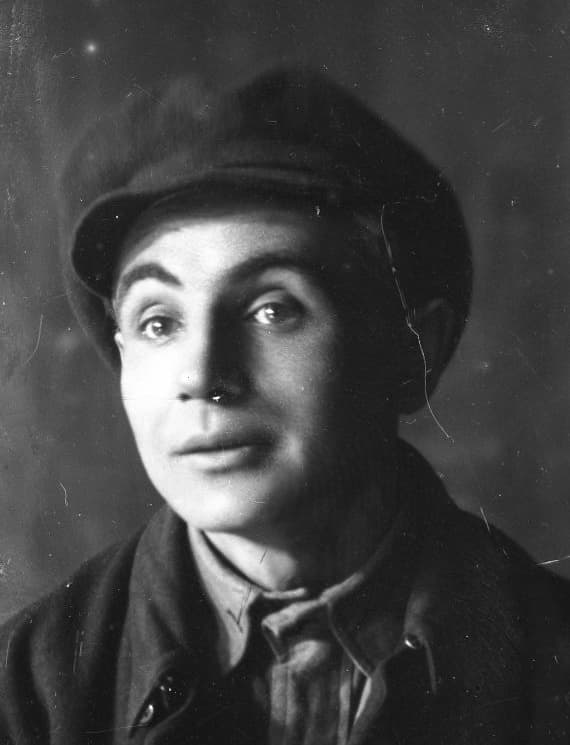(17.07.1893 – 7.05.1954)
Danylo Demutskyi was a Ukrainian photographer and cinematographer.
He was born in Okhmativ village, Kyiv Gubernia (today the Uman raion of Cherkasy oblast) to Porfyrii Demutskyi – a doctor and collector of folk music. After graduating from the Second Kyiv Gymnasium in 1911 he entered Saint Volodymyr University of Kyiv to study medicine, before switching to law a year later.
Danylo Demutskyi becomes interested in photography while still in high school. In 1911 he joins the Kyiv Society of Amateur Photographers Daguerre, where he learns various aspects of photography and discovers the monocle lens, which would become his creative calling card. In 1913 he begins participating in exhibitions, making his debut with four landscapes at the All-Russian Exhibition of Photo Artists. After graduating from university (1918) he becomes a professional photographer. In 1921 the All-Ukrainian Academy of Sciences invites him to organize a photography laboratory at the Museum of Anthropology and Ethnography. Next he is approached by the All-Ukrainian History Museum and the Berezil Theater, where he organizes a photography studio and creates a series of photo portraits of the actors. In 1925 he head up the photography laboratory at the Odesa Film Studio and becomes a cameraman in 1926. In 1929 he starts working as a cameraman at the Kyiv Film Studio.
During this time, Demutskyi is awarded a gold medal at the International Exhibition of Modern Decorative and Industrial Arts in Paris. He has exhibitions in Kyiv, Kharkiv, Odesa, Moscow and Leningrad. His works appear in the magazines Vestnik fotografii [Photography Herald], Solntse Rossii [Sun of Russia], Foto dlya vsekh [Photography for Everyone].
He worked with cameraman Joseph Rona on his first film – Oleksandr Dovzhenko’s Vasia the Reformer (1926) – and went on to film Heorhii Stabovyi’s Fresh Wind and Dovzhenko’s Love’s Berries (1926). Demutskyi’s masterful portraits of the hero and subtle play of light and shadow in Stabovyi’s Two Days (1927) brought him success. In this film, as in Dovzhenko’s Arsenal (1929), the influence of expressionism on his technique can be seen. His greatest camerawork was on Dovzhenko’s Earth, where he showed his skill in using soft optics. Ivan would be his last collaboration with Dovzhenko. While working on the film, Demutskyi was arrested for four months by the State Political Directorate and the director would have to find two cameramen to replace him.
Demutskyi is again arrested in December 1934 on charges of belonging to the Russian All-Military Union and denied the right to live in 15 settlements for three years. The cameraman moves to Tashkent (the only city with film production where he is allowed to live), where he works at the newsreel studio (he is not allowed to work at the feature film studio), shares his experience with local cameramen, and takes photographs. Later he works at the Tashkent Film Studio, where he films the documentary Country of Spring (1940). He plans to return from exile, but is arrested again by the NKVD in early 1938. Danylo Demutskyi returns to Kyiv after 17 months in prison.
During WWII he is evacuated with the studio and ends up back in Tashkent, where he works on Combat Film Collections and films the feature films Nasreddin in Bukhara (directed by Yakov Protazanov, Nabi Gʻaniyev and Roman Tikhomirov (1943)), Takhir and Zukhra (directed by Nabi Gʻaniyev and Yoʻldosh Aʼzamov (1945)), and The Adventures of Nasreddin (directed by Nabi Gʻaniyev (1946)). Through his camerawork he was able to convey the light of Central Asia. After the war he returns to the Kyiv Film Studio and films Borys Barnet’s Secret Agent (1947). This is the first time that he works almost entirely in a pavilion. He films in color for the first time while working on Ihor Savchenko’s Taras Shevchenko (1951), for which the crew would receive a State Stalin Prize. His work on other color films (Volodymyr’s Braun’s In Peaceful Time) would win him an Award for the Best Camera Work at the 6th Karlovy Vary International Film Festival. Tymofii Levchuk’s The Viburnum Grove (1953) would be the master’s last work.


